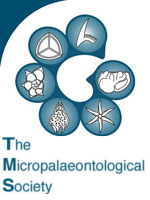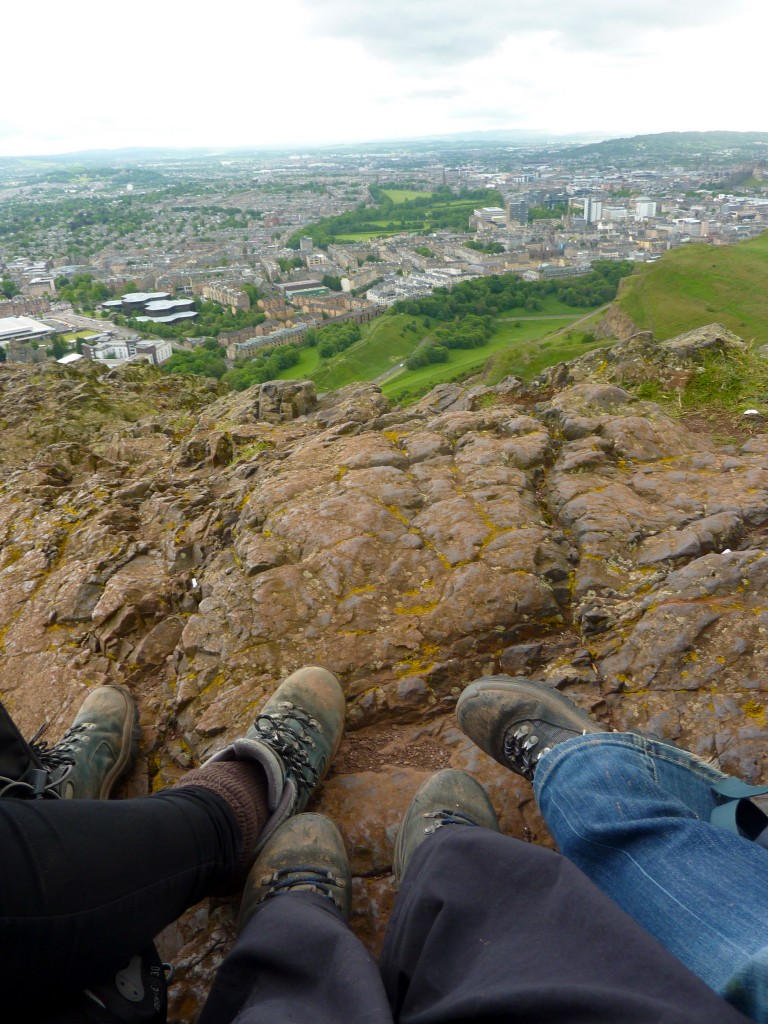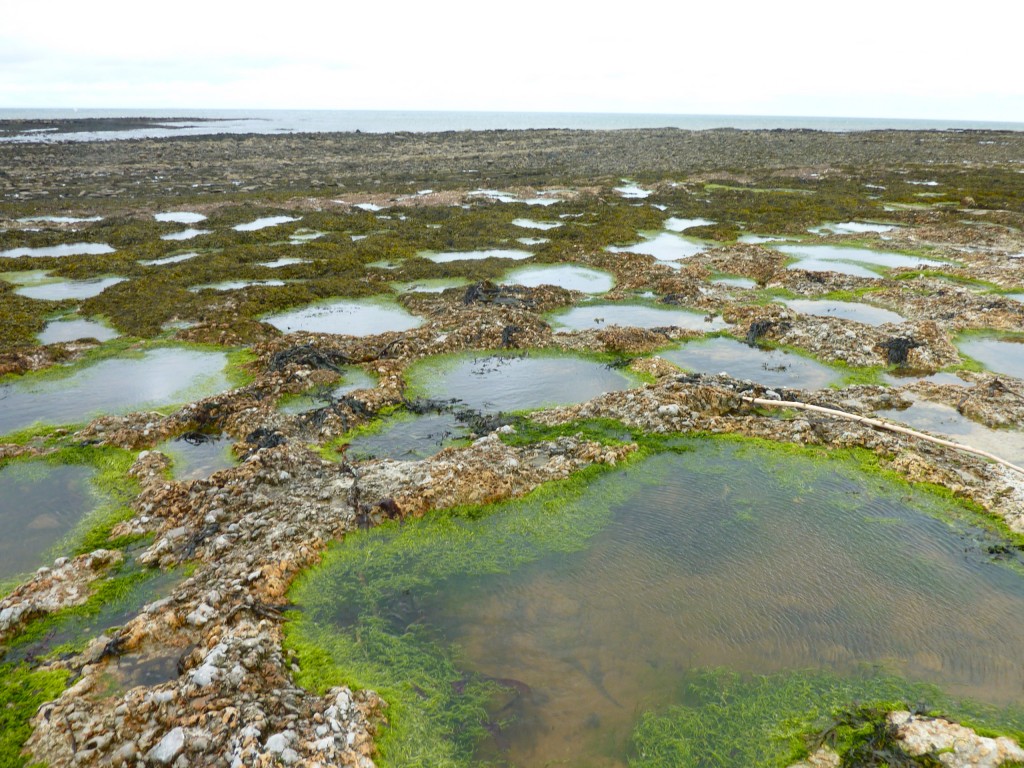CO2 and climate closely linked during the middle Miocene (11 to 17 million years ago)
by Gavin Foster, Carrie Lear and James Rae
The Miocene epoch spans a relatively long period of Earth’s history from 5 million to 23 million years ago. It contains the middle Miocene Climatic Optimum (from around 17 to 15 million years ago, also known as the MCO for short) – a period of global warmth (perhaps as much as 4-5 oC warmer than today) punctuating the overall cooling trend that has characterised the last 50 million years. Notably, the MCO is associated with (amongst other things) a smaller than modern Antarctic Ice Sheet. This is therefore a very useful period to study as it may serve as an analogue for our warm future, or at the very least, as a vital guide to how the Earth system functions when it’s warmer than today.
The most obvious driver of warmth during the MCO would be higher CO2 than the pre-industrial period (i.e. >280 ppm). However, much of the available proxy information does not support this and the middle Miocene is thought to be a time period when other factors control climate independent of CO2 – such as ocean circulation and mountain uplift. In a recent paper, by Gavin Foster, Carrie Lear and James Rae published in Earth and Planetary Science Letters , a new boron isotope-based CO2 record is presented that, in contrast to this long standing view, shows a remarkable agreement with indicators of the thermal state of the Earth System during the middle Miocene, for instance, the oxygen isotopic composition of benthic foraminifera (which reflect ice volume and bottom water temperature) and the state of the Antarctic Ice Sheet (Figure 1). When the temperature component of the oxygen isotope record is isolated and corrected for, the record of ice volume (the amount of ice stored on land) generated appears tightly correlated to CO2 (see Figures 1 & 2). This suggests that CO2 is driving the climate system during the middle Miocene and the climate system and the cryosphere are responding in a relatively linear fashion to CO2 forcing – e.g. when CO2 goes up the climate warms and the ice sheets melt and vice versa.
Whilst this observation provides further support for the importance of CO2in driving natural climate change, it does leave us with a couple of conundrums. Firstly, it is known from a number of sources that the Antarctic was much warmer during the MCO (e.g., see My oh Miocene!) and the Antarctic Ice Sheet (AIS) retreated behind the current ice margin at this time. Our new data suggests that it did this at a similar level of CO2 (~350-400 ppm) to that associated with its regrowth at the end of the MCO (Figure 1). According to ice sheet models this shouldn’t happen, because the AIS is so cold, bright and elevated, that a higher CO2 (and hence more warmth) is required to melt it than is required to form it in the first place (a process known as hysteresis). The answer to this conundrum is that it is likely some portion of the AIS is more mobile than the models are able to simulate (e.g. those portions, such as the Aurora subglacial basin, currently below sea-level, see http://www.antarctica.ac.uk//bas_research/data/access/bedmap/examples/bed10.gif). This of course has potentially worrying consequences for our future as we approach Miocene-like CO2 levels in the coming years. Because ice sheets are inherently sluggish, it will take many 100s of years for the AIS to reach equilibrium with modern CO2 levels, but when it does we may also experience Miocene-like sea-levels (>20 m higher than present).
Secondly, even after the MCO, when our new record suggests CO2 dropped to lower than pre-industrial values (280 ppm; Figure 1), the Miocene is thought to be significantly warmer than the pre-industrial. In particular, several studies (including this recent one in Nature) indicate that climate cooled from the Late Miocene to the Pliocene (11 to 2.5 million years ago) – and if CO2 is already at low values, what is driving this cooling? Unfortunately CO2 records for the Late Miocene to Pliocene are sparse so we are not currently able to identify exactly what CO2 is doing during this period. This means it is still possible that CO2 and climate are decoupled for part of the Miocene. However we are in the process of generating some new boron based CO2 records for this crucial period so we may know the answer in the coming months – so watch this space!
FIGURES
CAPTION FIGURE 1. (a) Middle Miocene pCO2 (Foster et al., 2012), (b) benthic foraminiferal δ18O at ODP 761 (Lear et al., 2010) – this parameter reflects both the temperature of the deep water the foraminifera grew in and the amount of ice on land (ice volume), (c) δ18O of seawater (δ18Osw) reconstructed at ODP 761 (Lear et al., 2010) – this parameter is just ice-volume. (d) schematic summary of shore based reconstructions of the Antarctic Ice Sheet with the length of the black bands incorporating both dating uncertainties and the likely duration of events (Sugden and Denton, 2004; Rocchi et al., 2006; Lewis et al., 2006; Lewis et al., 2007; Lewis et al., 2008), (e) AIS size based on heavy mineral assemblage in the AND-2A drill hole, Ross Sea (Hauptvogel and Passhier, 2012), (f) accumulation rate of debris delivered to the North Atlantic by ice bergs (ice rafted debris; IRD) >0.5 mm in size (from Winkler et al., 2002) and (g) schematic Antarctic glacial history based on the results from the AND-2A drill hole, Ross Sea (Passchier et al., 2011). For (a) symbols are as for Figure 8 and for (b) and (c) symbols are as for Figure 5. Also shown in (g) is the average accumulation rate of IRD >0.5 mm (g/cm2/ka) at ODP Site 909 during the last 1 million years (0.13 g/cm2/ka). In (g) the white fill denotes time periods of expanded, cold-based AIS with advance beyond the modern grounding line beginning at ~14.7 Ma (black line) coincident with the start of the MMCT. Periods of polythermal conditions and a reduced AIS compared to the modern are shown as light grey and periods of significant retreat as dark grey (modified from Passchier et al., 2011).
CAPTION FIGURE 2. . The relationship between δ18Osw (which represents the amount of ice stored on land – ice volume) and climate forcing (δFCO2 = 5.35 * ln[CO2/278] W/m2) by pCO2. In each plot data from ODP 761 is shown as filled blue diamonds and ODP 926 as open blue triangles. Error bars are the sum of the analytical uncertainty in d11B, the uncertainty in TA and sea surface temperature (see text). Uncertainty in δ18Osw is related to the two estimates made by Lear et al. (2010; with and without taking into account the effect of ΔCO3= on Mg/Ca temperature).
REFERENCES:
Hauptvogel, D.W., Passchier, S., 2012. Early-Middle Miocene (17-14 Ma) Antarctic ice dynamics reconstructed from the heavy mineral provenance in the AND-2A drill core, Ross Sea, Antarctica. Global and Planetary Change 82-83, 38-50.
Lear, C.H., Mawbey, E.M., Rosenthal, Y., 2010. Cenozoic benthic foraminiferal Mg/Ca and Li/Ca records: Toward unlocking temperatures and saturation states. Paleoceanography, doi:10.1029/2009PA001880.
Lewis, A.R., Marchant, D.R., Ashworth, A.C., Hedenas, L., Hemming, S.R., Johnson, J.V., Leng, M.J., Machlus, M.L., Newton, A.E., Raine, J.I., Willenbring, J.K., Williams, M., Wolfe, A.P., 2008. Mid-Miocene cooling and the extinction of tundra in continental Antarctica. Proceedings of the National Academy of Science 105, 10676-10680.
Lewis, A.R., Marchant, D.R., Ashworth, A.C., Hemming, S.R., Machlus, M.L., 2007. Major middle Miocene global climate change: Evidence from East Antarctica and the Transantarctic Mountains. Geological Society of America Bulletin 119, 1449-1461.
Lewis, A.R., Marchant, D.R., Kowalewski, D.E., Baldwin, S.L., Webb, L.E., 2006. The age and origin of the Labyrinth, western Dry Valleys, Antarctica: Evidence for extensive middle Miocene subglacial floods and freshwater discharge to the Southern Ocean. Geology 34, 513-516.
Passchier, S., Browne, G., Field, B., Fielding, C.R., Krissek, L.A., Panter, K.S., Pekar, S.F., Team, A.-S.S., 2011. Early and middle Miocene Antarctic glacial history from the sedimentary facies distribution in the AND-2A drill hole, Ross Sea, Antarctica. Geological Society of America Bulletin 123, 2352-2365.
Rocchi, S., LeMasurier, W.E., Di Vincenzo, G., 2006. Oligocene to Holocene erosion and glacial history in Marie Byrd Land, West Antarctica, inferred from exhumation of the Dorrel Rock intrustive complex and from volcano morphologies. Geological Society of America Bulletin 118, 991-1005.
Sugden, D., Denton, G., 2004. Cenozoic landscape evolution of the Convoy Range to Mackay Glacier area, Transantarctic Mountains: Onshore to offshore synthesis. Geological Society of America Bulletin 116, 840-857.
Winkler, A., Wolf-Welling, T.C.W., Stattegger, K., Thiede, J., 2002. Clay mineral sedimentation in high northern latitude deep-sea basins since the Middle Miocene (ODP Leg 151, NAAG). Internation Journal of Earth Sciences 91, 133-148.
Recovering the Critical Time Interval
These are exciting days for the scientists above JR, on the IODP Expedition 342.
Recovering a complete record of the Eocene and Oligocene when Earth goes from being a really warm greenhouse into an interglacial icehouse mode of climate.
More about the expedition Joides Resolution
IODP 342 Newfoundland. Episode Three – “Time Machine”
Time Machine, episode three of the Integrated Ocean Drilling Program IODP introduces JOIDES Resolution as a tool to move back in time. Meet the “Keepers of Tme” or the scentists who study Paleomagnetism and Paleontology.
See the path of a core as it is removed from the drill and travels to the catwalk, through the core lab, and finally to the refrigerated storage area to await shipment off the JR. Geochemist Howie Sher discusses the amazing bacteria that is slowly eating away the Titanic and there is a eocene mammal trouble maker stealing samples in the core lab!
Read more: IODP
Icehouse goes to TMS meeting on Edinburgh
Eleanor John and Kirsty Edgar report from Edinburgh
 This year, ‘The Micropalaeontological Society Foraminifera and Nannofossil Groups Joint Meeting’ (or TMS for short!) was held at the University of Edinburgh from 21-23rd June. Professor Paul Pearson, Drs Tom Dunkley-Jones, Kirsty Edgar, Eleanor John and PhD student Isabel Fenton from the ‘Descent into the Icehouse’ team were in attendance along with around 80 other eager micropalaeontologists.
This year, ‘The Micropalaeontological Society Foraminifera and Nannofossil Groups Joint Meeting’ (or TMS for short!) was held at the University of Edinburgh from 21-23rd June. Professor Paul Pearson, Drs Tom Dunkley-Jones, Kirsty Edgar, Eleanor John and PhD student Isabel Fenton from the ‘Descent into the Icehouse’ team were in attendance along with around 80 other eager micropalaeontologists.
The meeting brought together micropalaeontologists working in industry and academia, those more interested in the application of microfossils, e.g. for climatic and environmental studies and even a local artist, Anne Bevan, who has been collaborating with marine bio-scientists to create sculptures, images and poetry inspired by studies of microplankton.
The conference was held in the University’s Pollock Hall, situated next to Holyrood Park, and the iconic Arthur’s Seat was visible from the conference centre. When the rain stopped and the mist cleared many of us took advantage of the fact that it was only an hour’s walk to the summit and were treated to 360° views of the city and its surroundings.
There were four talk sessions each day with long breaks in between for us to peruse the posters. Kirsty Edgar and Isabel Fenton gave talks and Eleanor John presented a poster. Dr Tracy Aze, who is part of the NERC-funded UK Ocean Acidification Research programme focussing on Eocene ocean acidification events, won a prize for her talk on the evolution of Cenozoic planktic foraminifera. Well done to her!
Because the meeting was relatively small, it provided an excellent opportunity to meet key workers in the community in an intimate setting. This was aided by the fact that the meeting was incredibly well organized (with a generous supply of cakes to aid motivation!) with plenty of time for people to mingle and to discuss ideas.
Following the meeting there was a geological field excursion to the Scottish coastline. After two days of rain we were exceptionally lucky and the rain held off for a day of carboniferous fossil hunting fun and a trip to Siccar Point, one of the most famous of geologist James Hutton’s unconformities. The descent down to the unconformity was rather steep and not for the faint-hearted! But it was well worth the walk down to see the abrupt contact between the vertically inclined Silurian greywackes and the overlying gently dipping Devonian red sandstones and breccias that so inspired Hutton.
Conference highlights included:
1) In depth discussions of how we apply species concepts in the geological record;
2) Presentations on the impact of changing foraminifer palaeoecology on geochemical records;
3) Emphasis on the critical role that planktic foraminifer play as a primary means of age control throughout their stratigraphic range;
4) The fieldtrip on the final day of the conference and the walk up to Arthur’s Seat.
Foraminifera and calcareous nannofossils provide the basis for many of the geochemical and palaeoecological analyses underpinning the Descent into the Icehouse project, thus an understanding of their evolution and palaeoecology is vital if we are to properly understand our data. The conference provided an excellent insight into many of the issues surrounding the use of these organisms and we all came away feeling much better informed. Overall, It was well the visit and certainly helped by the beautiful surroundings!
Integrated Ocean Drilling Program, Episode Two
Core on Deck
The Integrated Ocean Drilling Program (IODP)
Expedition 342 will drill a depth transect between ~2400 and 5000 m water depth into a sequence of rapidly accumulated sediment drifts of Paleogene age on J Anomaly Ridge and Southeast Newfoundland Ridge. The science party will study multiple extreme climate events at unprecedented temporal resolution from a high-latitude site during an interval of time when Earth was much warmer than today.
Gavin reports from Goldschmidt 2012, Montreal, Canada
This year from 24-29 June Montréal, Canada played host to the 22nd Goldschmidt geochemistry conference. Project PI Gavin Foster , with his B-team (Post-docs Miguel Martinez-Boti, Marcus Gutjahr; Eleni Anagnostou, and PhD students Michael Henehan, Rosanna Greenop and Tom Chalk), and around 3000 other geochemists attended (including Descent project member Richard Pancost). Perhaps it was because it coincided with the Montréal Jazz festival, or perhaps it was the sunny weather, or maybe simply the science, but I felt this year’s conference was particularly good.
It all started with a pre-conference boron user group meeting on the 24th (organised by Marcus Gutjahr, Bärbel Hönisch from LDEO and me) where around 30 scientists from Europe, US and world-wide discussed what is needed to improve the accuracy of boron isotope (and concentration) measurements in marine carbonates – a central technique of the Descent into the Icehouse project. After some presentations and some discussion, we all agreed on a set of CaCO3 reference materials and have an outline now for a set of experiments to ensure we are better able to compare data between laboratories in the future.
Goldschmidt 2012 itself was intense to say the least. Most days had a 0830 am start with some sessions only finishing at 1730 (with obligatory breaks in the afternoon for EURO 2012 – though sadly this wasn’t an issue for the English contingent after Sunday!). Highlights for me included:
- Our boron-based proxies session on Monday;
- On Tuesday the news from IODP 318 Wilkes Land expedition which suggested that East Antarctica was more dynamic than previously thought during the warm Pliocene (Cook et al.) and middle Miocene (Pierce et al.) periods.
- In several sessions studies were discussed where major steps forward are being made in reconciling the overly hot temperatures the TEX86 proxy is spitting out for the early Cenozoic.
- Thanks to some very innovative approaches shown later in the week involving NanoSIMS (Alex Gagnon) and laser ablation (Howie Spero) we seem to be getting closer to understanding exactly how and why foraminifera record the environment they live in. Other highlights from the meeting can be found at http://www.goldschmidt2012.org/.
I am certainly glad to be home but I’m really looking forward to presenting our new data from the Descent into the Icehouse project in Florence at Goldschidt 2013!
Links
Follow us on Twitter
Recent Posts
- In the News : What a three-million year fossil record tells us about climate sensitivity
- Past evidence confirms recent IPCC estimates of climate sensitivity
- Crucial new information about how the ice ages came about : PR & Podcast
- 2014 Sino-UK Coevolution of Life and the Planet Summer School
- Past and Future CO2 – Reconstructing atmospheric Carbon Dioxide











